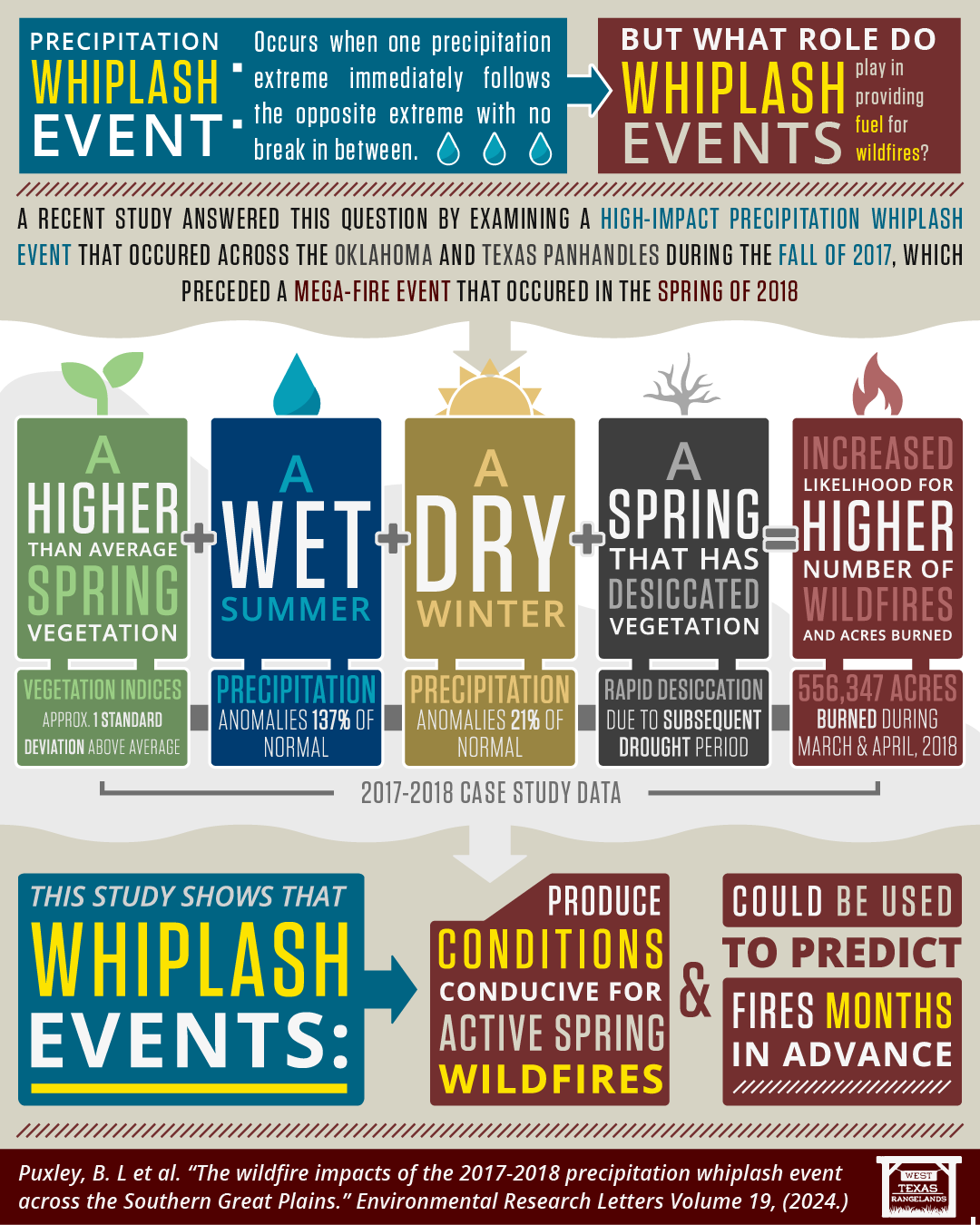 Above average precipitation during the growing season, spurring on massive amounts of grass growth, followed by significant drought, resulting in an intense wildfire season. All within a single year. It’s absolute whiplash! Sound familiar? Researchers recently examined the role of whiplash events where preceding precipitation produce massive fuel for wildfires in a short period of time using 2017-2018 in Texas and Oklahoma as a case study. While studies like these have been done in California, there have been limited studies like this across the Southern Great Plains. This study was the first time that the relationship among precipitation, vegetation, and wildfires have been looked at collectively across the Southern Great Plains!
Above average precipitation during the growing season, spurring on massive amounts of grass growth, followed by significant drought, resulting in an intense wildfire season. All within a single year. It’s absolute whiplash! Sound familiar? Researchers recently examined the role of whiplash events where preceding precipitation produce massive fuel for wildfires in a short period of time using 2017-2018 in Texas and Oklahoma as a case study. While studies like these have been done in California, there have been limited studies like this across the Southern Great Plains. This study was the first time that the relationship among precipitation, vegetation, and wildfires have been looked at collectively across the Southern Great Plains!
This study specifically looked at the correlation between a high impactful precipitation event that occurred during the Fall of 2017 across Oklahoma and the Texas Panhandle and the mega-fire event that followed in the Spring of 2018.
During the growing season of 2017, precipitation was 137% of normal, but in the next few months drought conditions followed with precipitation at only 21% of long-term average throughout the cool winter season. The excessive rain supported the vegetation recovery and growth with approximately 1 standard deviation above average during August of 2017. Following summer, significant drought conditions quickly formed and lasted throughout fall and winter drying out fine fuels and current-season growth turning forage into fuel quite rapidly.
As a result, during March and April of 2018, dozens of wildfires burned 556,347 acres in the Southern Great Plains resulting in at least two fatalities, dozens of homes and structures lost, and over 500 personnel dispatched to suppress the wildfire whiplash event.
For more information and the full study, be sure to check it out The wildfire impacts of the 2017-2018….